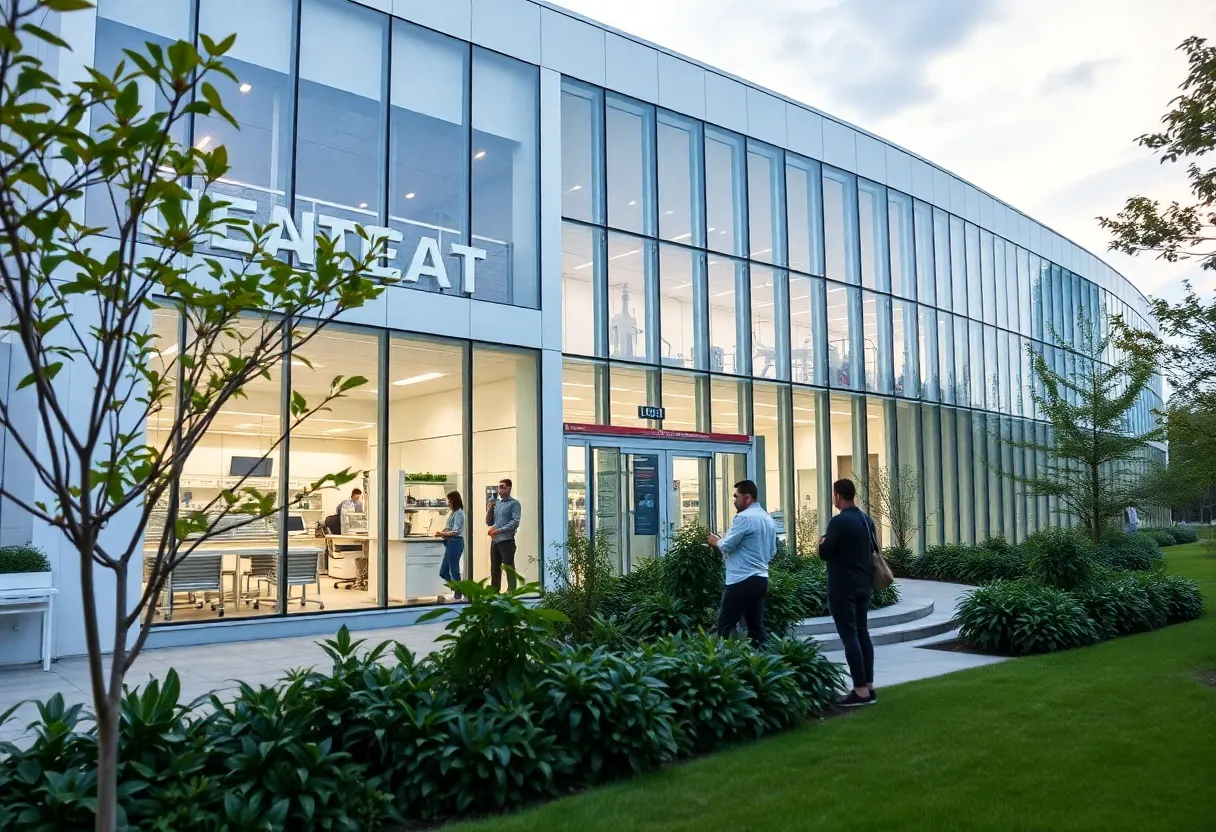News Summary
Bank Rhode Island has initiated its annual summer food drive, collecting nonperishable items until August 15 to support local families facing food insecurity. With the Rhode Island Community Food Bank’s reports of rising food assistance needs, this drive underscores the importance of community involvement. Each of the 22 BankRI branches will serve as collection points, collaborating with local food pantries to ensure donations directly benefit those in their communities. Among the most needed items are peanut butter, canned goods, and pasta, highlighting the pressing issue of hunger in Rhode Island.
Providence, RI – Bank Rhode Island has launched its annual summer food drive starting this week, collecting nonperishable food items until August 15. The initiative aims to assist local families grappling with food insecurity, a pressing issue in the state. Throughout the drive, all 22 BankRI branches will act as collection points to gather donations for local food pantries.
The Rhode Island Community Food Bank has reported a staggering rise in food assistance needs, currently serving over 89,000 individuals each month—an all-time high. This surge in demand is largely attributed to escalating living costs and an increasing reliance on food pantries. The organization also noted that from January to September of last year, food pantries served an average of 84,400 people monthly, marking a 9% increase from the prior year.
The president and CEO of BankRI highlighted the critical role of community support in addressing food insecurity, particularly during these challenging financial times. Each BankRI location is collaborating with a local food pantry, ensuring that contributions remain within individual communities and directly benefit those in need. Collection bins for nonperishable food are strategically placed in the lobbies of all BankRI branches, making it easy for residents to donate.
Essential Food Items
Among the most needed items are peanut butter, tuna, canned and dried beans, nutritious breakfast cereals, rice, canned chili, soups and stews, pasta, tomato sauce, canned fruits and vegetables, and macaroni and cheese. The food drive encourages a community approach to tackling the issue of hunger.
Food Insecurity Statistics
According to recent reports, approximately 38% of households in Rhode Island experienced food insecurity in the past year. This means a significant number of families in the state are struggling to have enough food on the table. A particular demographic affected by this issue is single-parent households; 78% of single parents with two children earn less than the income required to meet basic needs, which is around $99,000 annually. For a single adult, the threshold is approximately $39,741. These figures underline the financial challenges many families face, often forcing them to choose between paying for food or shelter.
In the past year, residents in Rhode Island missed over 42.2 million meals due to financial constraints, highlighting the severity of the situation. The rise in food insecurity has prompted various town hall-style meetings where food security experts and community leaders have convened to discuss solutions. Key topics of discussion included the necessity of increased federal Supplemental Nutrition Assistance Program (SNAP) benefits to assist families struggling with food insecurity.
Community Response
BankRI’s food drive, now in its fifth week, has formed partnerships with 13 local food pantries to enhance community support during this time of heightened need. The directors of these pantries have expressed their gratitude for the bank’s initiative, especially in light of the unprecedented demand for food assistance they are facing. With high living costs dominating the current economic landscape, the difficulties many families encounter are projected to worsen, especially as the state anticipates a projected $400 million shortfall in the fiscal year starting July 1, 2025.
The purpose of the food drive extends beyond merely collecting items; it aims to ignite a wave of community involvement in addressing food insecurity. Awareness of the resources available and collaboration among local institutions are needed to mitigate the effects of economic disparity, ensuring that vulnerable families have access to basic nutritional support.
Deeper Dive: News & Info About This Topic
HERE Resources
Rhode Island Launches FreshMaps App for Historical Exploration
Rhode Island Manufacturers Adjust Prices Amid Tariffs
Providence Teachers Union Ratifies New Contract Amid Ongoing Challenges
Heritage Restaurant Group Acquires Olneyville New York System
Ellie’s Named Best Brunch Restaurant in Rhode Island
Kenneth Zorabedian Celebrates 20 Years of United Parking LLC
Wright’s Creamery Launches ‘Wicked R.I.’ Test Batch Club
Sonic Drive-In Opens New Location in Cranston, Rhode Island
Rhode Island Expands Cannabis Market with New Showcase Event
Social Enterprise Greenhouse Supports Local Entrepreneurs
Additional Resources
- Rhode Island Current: Food Insecurity Soars to All-Time High
- Providence Journal: Rhode Islanders Struggle with Food Insecurity
- WPRI: Local Pantry Runs Out of Food
- Eat Drink RI: ISCO Announces Program to Combat Food Insecurity
- Providence Journal: Community Gardens Fight Food Insecurity
- Wikipedia: Food Insecurity
- Google Search: Food Insecurity Statistics
- Google Scholar: Food Insecurity Research
- Encyclopedia Britannica: Food Insecurity
- Google News: Food Insecurity Rhode Island

Author: STAFF HERE PROVIDENCE WRITER
The PROVIDENCE STAFF WRITER represents the experienced team at HEREProvidence.com, your go-to source for actionable local news and information in Providence, Providence County, and beyond. Specializing in "news you can use," we cover essential topics like product reviews for personal and business needs, local business directories, politics, real estate trends, neighborhood insights, and state news affecting the area—with deep expertise drawn from years of dedicated reporting and strong community input, including local press releases and business updates. We deliver top reporting on high-value events such as WaterFire, Rhode Island International Film Festival, and Rhode Island Comic Con. Our coverage extends to key organizations like the Greater Providence Chamber of Commerce and Providence Warwick Convention & Visitors Bureau, plus leading businesses in finance and manufacturing that power the local economy such as Citizens Financial Group and Textron. As part of the broader HERE network, we provide comprehensive, credible insights into Rhode Island's dynamic landscape.





